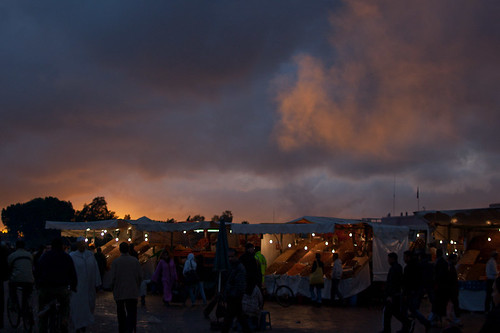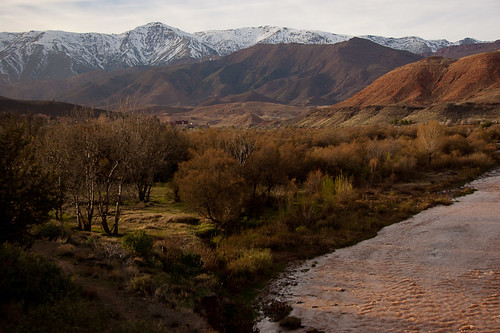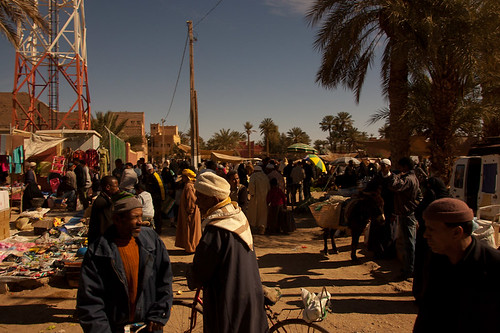Man.
The death of journalism and the death of photo journalism. These stories are everywhere at the moment. Its ridiculous.
I was recently reading about the death of photojournalism for the millionth time, on a few websites here:
http://www.epuk.org/Opinion/961/for-gods-sake-somebody-call-it
http://www.frankwehrmann.de/?p=1283
http://www.npr.org/templates/story/story.php?storyId=129284174
As far as I'm concerned, a lot of the big papers and magazines are killing themselves off by not doing enough indepth journalism and photojouralism work. If you feel that you could get the same news on the web, why would you buy a paper or magazine?
Going Deep
The advantage these industries have over the internet is that they employ professional journalists that can go more in-depth on a story than anyone. They should be able to deliver information that the common person on the street could never have the time or resources to produce, with a higher quality of writing and at a more in-depth level.
The internet is a massive problem for traditional journalism and it is not going to go away. Also, due to bad reporting, public opinion gaining prominance, sound bite reporting and sensationalism in the media, traditional journalism finds itself in a crisis. I think that they need to take a long hard look at the industry and move themselves into a space where they can still be valid. A part of the job that the press always had is to report the latest news. but the internet can do that better than any newspaper can. So, what can they do to still have validity?
They need to go back to their roots, go deep and use journalistic skill to create something more than what you can obtain from the blogosphere. This will mean that they need to reduce the frequency that they can release their product and move themselves closer to the distribution style of magazines. By doing this, they can get journalists to actually investigate into their stories to a deeper level than they can at the moment. This includes in-depth photojournalism projects done by professional photojournalists as stand-alone stories or to back up the articles.
Obviously, this would entail a large amount of rescaling of the industry, but this is inevitable at the current time. They are currently are too big to be redefined and need to be downscaled to meet future needs.
Rebranding
Rebranding is another issue that needs to be addressed. While every other print based industry has had to continually keep up with design trends, newspapers have been left far behind, with their layouts and design staying pretty much the same for years. I mean, seriously, what industry these days can have the same format for so many years? Innovative layouts, redesign of the front cover and logos, infographics and using the page format interestingly would be some of the steps to renew interesting in these mediums.
This TED video outlines how newspapers can be innovatively rebranded and redesigned to meet modern design standards, without losing their serious image:
Current Newspapers
Recently I got the Sunday Telegraph free with a bottle of water at the train station and had a good look through the whole paper. I went through most of the paper looking for an interesting article or anything that would catch my eye. After about half an hour I had found very little of interest in a paper that was as thick as my old laptop. Most of the paper was so general that I found it hard to believe that anyone could find the articles interesting. Where was the in-depth analysis and unique content? Because it was so thick I wondered when most of the content was created. Was it from a library of stock content? Were they recycling old stories? They need to give it away for free with a bottle of water and that says a lot.
Another aspect of this is, who were they targeting? Who was their demographic? Had they thought about a demographic or were they trying to target everyone? If you target everyone, do you actually target noone? Every company that wants to sell things needs to aim for some kind of demographic. That is fundamental to any business. Newspapers need to define their target audience and start aiming to that audience.
Wikileaks
Something that has astounded me recently was the creation of Wikileaks on the internet. They have released classified documents as well as videos of the US military killing civilians. This is an organisation that consists of 5 full time staff that can leak 90,000 classified files, where the normal press has not come even close to this in decades.
I watched a live press conference of Julian Assange, the editor in chief of wikileaks, being interviewed by the press. I was astounded by the questions that the press were asking this guy. They were labelling him as irresponsible for leaking the classified documents and kept asking him why he thinks that this is important! Finding out what governments are up to should be part of their own jobs and taking the side of the government shows how far from the path many of the press have strayed. It was embarassing to watch.
If 5 people can leak 90,000 classified documents and encripted film footage, news organisations should be embarassed that they can not.
BJP Magazine
I am currently addicted to BJP magazine. It has redefined photography magazines for me and has created something that no other magazine comes close to.
Currently, photo magazines all seem to be very similar and there are shelves and shelves of them. '10 ways to shoot better Black & White', 'Great lessons to improve your HDR photography', 'How to use the rule of thirds to improve composition'. All of these areas are ok for the first 6 months, when you are starting into the field of photography but quickly are repetitions and regurgitations of basic knowledge that anyone knows. Buy one good photography book and you can learn all of this stuff much easier. Who are buying all of these titles?
BJP magazine is a different story. In-depth interviews with many photographers, a topic per issue tackled from many different angles, detailed news from the photo world and inspirational photography from every corner of the world. The writing is top notch and the quality of articles is incredible. I always feel like a lot of research has gone into the articles and I'm always more informed by the end.
This is an example of quality journalism that pays off. They have found a niche, hired quality writers and gone deep rather than scratching the surface. I think that the traditional media should pay attention to examples like this.
The rebirth of Journalism
I believe that journalists play an important role in reporting news and are an essential part of our society. The press is needed to hold governments to account for any wrong doing and if the press dissapears many problems and atrocities may never be addressed. If there are no news outlets, most of the information on the internet will dry up, leaving superflous stories and information with no substance. We need quality reporting that is investigative and is comprehensive.
This need will never dissapear, so journalism will not dissapear but will have to change. By digging deeper into more longform stories, resizing operations, rebranding, redesigning their pages and content, creating topics per issue, targeting specific demographics and focussing on what the internet cannot provide, I believe the journalistic world can save its self. This is no mean feat and many companies will collapse but those that do change and adapt should come out stronger.
But the very moves that companies are making to rescale are the wrong moves. They get rid of their inhouse photographers and reduce the amount of stories that need research over longer periods. These are the very areas that make these industries unique and should be the last to go.
Moving over to deploying content through devices such as the ipad gives these companies a unique moment to do these things and the companies that take this opportunity will be the ones that survive.
Journalism will not die but will be redefined and updated. This temporary down period will help in the future redefinition of journalism & inturn photojournalism.


